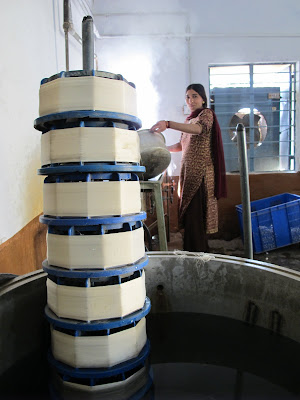
The deteriorating interiors of the heritage building was an ominous playground. Except for the shards of light pushing through the cracks and openings of the windows, the place was completely dark. Guided by the city engineer, our surveyer, and followed by the key-holder who was constantly ensuring that I didn't trip over the mounds of rubble and garbage, we slowly made our way through a procession of rooms. All it took was a few unlatched window shutters to bring the spaces to life; one after another, the character of each room was unveiled before my eyes.
Eventually, we come to the central double story space, which would have been a lobby of sorts. It was apparent from my view through a small on-looking opening, that the structure of the roof had failed over this enormous span. What was once a beautiful arched two-storey space is now a sun-drenched container of garbage.
Despite the poor state of the building's means of egress, we managed to reach the second floor by accessing low roofs from window openings and climbing up a few rusty ladders. In our exploration of the upper floor, we came to more awesome-looking structural failures of floor and roof assemblies.
The further up we climbed, the more interesting the building became. At the end of each wing on the upper floor, there is access to an occupiable space located on top of one of the gateway entrances onto the site, opening up views back down onto the busy street that feeds this community.
Then we hit the roof. Actually, roofs. Stepped terraces looking down into secret interior courtyards, and stairs and ladders onto plateaus further up capped off the experience.


From the highest roof, we came to a giant hole in the structure that looked right back down into the double-storey entrance space we saw earlier.
The romantic, ruined state of the building made it hard for me to imagine this place renovated and preserved to be more reflective of the city's heritage than it was at the moment. Perhaps all that was necessary was to simply make the building accessible? To me, this building was novel and nostalgic (Rome), in fact, I could not stop taking photos of every nook and cranny. Every crack in the walls and every pattern of light was so rightly composed. And every piece of broken glass and rubble was so perfected situated from my perspective.
Trailing behind the group, I was the essence of a Japanese tourist that day.











































